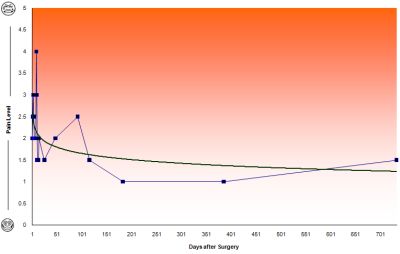As you can imagine, this is the type of surgery you don't approach lightly. To make sure I'd covered all my bases, I started researching the internet for other options. Around the same time, I happened to read an article in a triathlon magazine about a world class athlete that had somewhat similar conditions to me and had undergone surgery in nearby Boulder, Colorado. Further research indicated that the surgeon's name was Dr. Vilavincencio. During my appointment with Dr V (Villavincencio), I was made aware of a new treatement that was being trialled for the FDA by Abbott Laboratories. The solution was called "Wallis Stabilization System" and was far less evasive than disc replacement surgery and has been performed successfully in Europe for the 14 years or so. Dr V. believed that I qualified for the trial - some of the requirements are listed below:-
(Image courtesy of  )
)
 )
)The Wallis device is a small grommit looking object that is inserted, from the back, between the two spinal bones where the degenerative disc disease occurs.
Two straps are tied securely around those two bones and attached to the Wallis device to allow for flexibility. Essentially the Wallis device acts as a shock absorber and sets the spacing between the two bones as it should be with a clean disc.
Based on the information I was given on the Wallis Stabilization system and the fact that the procedure was reversible (since nothing is altered or removed from your body, you can remove the implant and be back where you were), I decided to sign up for the trial



